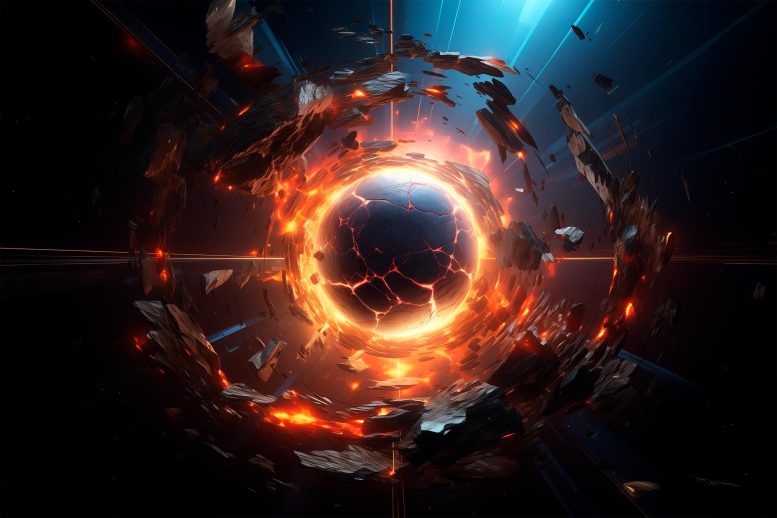
Antimatter, the mirror image of matter’s subatomic particles, is a fascinating yet elusive element of our universe. Although theories suggest equal amounts of matter and antimatter should exist, the observable universe predominantly contains matter. This discrepancy poses a significant mystery in physics.
What Is Antimatter?
Antimatter is the twin of almost all the subatomic particles that make up our universe. The matter in our universe comes in many forms—solids, liquids, gasses, and plasmas. These forms of matter all consist of subatomic particles that give matter its mass and volume. These particles include protons and neutrons (also known as baryons), electrons and neutrinos (also known as leptons), and a variety of other particles in the Standard Model of Particle Physics.
Protons and neutrons are themselves made up of particles known as quarks and gluons. But matter can have an opposite in the form of antimatter. In fact, all the subatomic particles in matter either have their own anti-twins (antiquarks, antiprotons, antineutrons, and antileptons such as antielectrons) or they straddle the boundary between matter and antimatter.
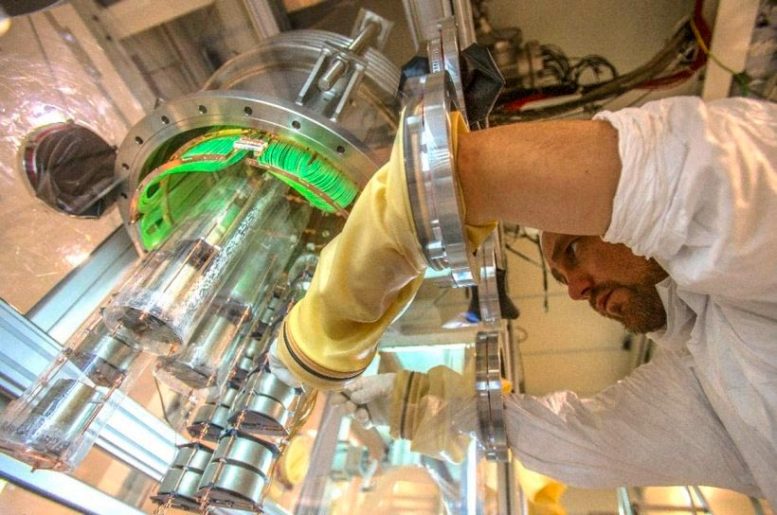
Physicist assembling detectors 1.4 km under the mountains in Italy to search for a rare nuclear decay that if observed, could explain why we are made of matter and not anti-matter. Credit: LEGEND Collaboration
These anti-particles can combine to form anti-atoms and, in principle, could even form anti-matter regions of our universe. Scientists believe that these anti-matter regions would have the same physics, chemistry, and other properties. Scientists haven’t seen anti-matter regions in our universe, but they have created copious amounts of antiparticles in particle accelerators and even created anti-elements and anti-atoms. We also know about antimatter from the anti-particles that cosmic ray collisions create. Some types of radioactivity also produce antimatter antiparticles.
Why isn’t antimatter everywhere? When matter and antimatter meet, they annihilate each other, releasing energy. That leads us to the biggest mystery about antimatter. Scientific theories predict that the Big Bang should have created the same amount of matter and antimatter. But if that were true, all the matter and antimatter would have destroyed each other. That would mean there wouldn’t be any matter in the Universe to create stars, planets, or people. Physicists believe that there was one extra matter particle for every billion matter-antimatter pairs. This is more than can be explained by the Standard Model, so scientists are working to understand why.
Fast Facts
- Antimatter may seem impossibly far from daily lives. But ordinary bananas produce antimatter, releasing one positron—the antimatter equivalent of an electron—about every 75 minutes.
- Neutrinos may be their own antiparticles. A matter particle and its antimatter partner carry opposite charges, making them easy to distinguish. Neutrinos, nearly massless particles that rarely interact with matter, have no charge. Scientists believe that they may be Majorana particles, a hypothetical class of particles that are their own antiparticles.
- Researchers at the Relativistic Heavy Ion Collider particle accelerator at Brookhaven National Laboratory discovered the antimatter equivalent of helium. These small advances open the doors to future research on antimatter and its role in our universe.
DOE Office of Science: Contributions to Antimatter Research
The Department of Energy (DOE) Office of Science’s High Energy Physics and Nuclear Physics programs have supported research on antimatter for decades as part of DOE’s involvement in fundamental physics research. The Office of Nuclear Physics supports research to understand the asymmetry between matter and antimatter within its Fundamental Symmetries portfolio.
This includes extremely sensitive table-top experiments using neutrons and nuclei and larger scale experiments hosted in deep underground laboratories looking for neutrinoless double beta decay, a predicted nuclear decay that would create two leptons without any accompanying antileptons thus creating more matter than antimatter.
The Office of High Energy Physics (HEP) supports the Deep Underground Neutrino Experiment (DUNE) designed to detect neutrinos created at Fermi National Accelerator Lab. DUNE should be able to tell whether neutrinos are a major contributor to this asymmetry. HEP also supports experiments at high energy particle accelerators that search for differences between matter and antimatter in the decay of heavy particles created in high energy collisions.


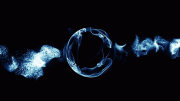



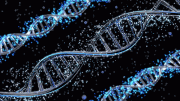

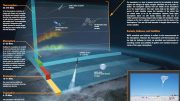
Be the first to comment on "Science Made Simple: What Is Antimatter?"